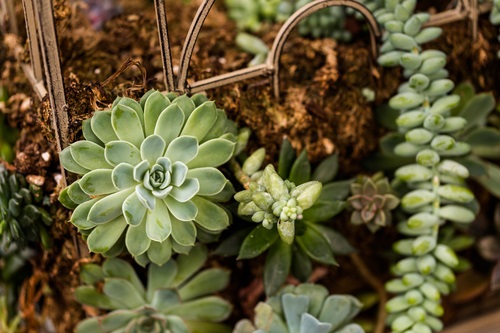6 Xeriscape Ideas
Xeriscape gardens are specially built to require little to no irrigation. Instead, they’re specially constructed to use minimal water, and conserve the natural water (like rainwater) that enters their system. The end result is an environmentally-friendly garden that’s still beautiful.
Because xeriscape involves such skill and knowledge, it can be tricky to know where to get started. But with these six xeriscape ideas, you’ll get a head start on planning your garden.

1. Think Beyond Cactus
Many people think xeriscape gardens are restricted to cactus and succulents. But most local plants are resistant to dry conditions in your area. Research native plants, or inquire with local gardening organizations, to find out what plants would flourish in your xeriscape garden.
2. Use Drip Irrigation
While many xeriscape gardens use no irrigation whatsoever, some use a form of irrigation called drip irrigation. Put small holes in a garden hose (or buy a hose specially perforated for this purpose), then lay it flat against the ground or near to it. Run this hose in the early morning or late evening, to minimize water loss due to heat.
The vast majority of the water through this slow drip system will get soaked up through the earth where it can nurture your plants, rather than getting lost to spray or evaporation. This is a good way to keep even drought-resistant plants through dangerous droughts, or to encourage your blooms to look their fullest during a dry season. To further maximize this method’s potential, place any plants that need more water close together, so they’re easier to water.
3. Try Perennials
Perennial flowers are more likely to be drought-resistant than annuals, and they’re lower maintenance, too. Try planting a group of perennial blooms close together to maximize their visual impact. For additional beauty, choose several perennials that will bloom at different times of year and plant them throughout your garden, to make sure you’ll always have something blooming.
4. Plan for Fall and Winter
Plants like Russian sage and many ornamental grasses dry out in the colder months. This is actually a positive: a well-planted standing will look like a dried bouquet. Add these to your xeriscape garden so there’s always something to draw the eye, no matter the season. You may even choose to avoid cutting back plants in colder months, to better take advantage of dried plants’ unusual shapes and appearances.
5. Fill Space with Rocks
Many xeriscape gardens gravitate toward gravel for open spaces. Gravel is great because it isn’t water-hungry like grass, and it holds moisture better than soil. But adding some beautiful rocks to cover space is a way to add texture and color to an area. Even just a small portion of rock garden adds character and variety to your xeriscape garden.
6. Play with Style
Not every xeriscape garden needs to look like a desert. With a little creativity and planning, xeriscape adapts well to any aesthetic or garden style. Don’t be afraid to think outside the box.
Xeriscape isn’t just environmentally friendly: it encourages creativity by imposing limits and forcing gardeners to think outside of comfortable tropes. Contact us and let us, plan and think creatively together. You’ll create a water-efficient space that’ll look its best in any season.
Tagged: DK Landscaping, landscape, Landscape Maintenance, landscaping
Both comments and pings are currently closed.





